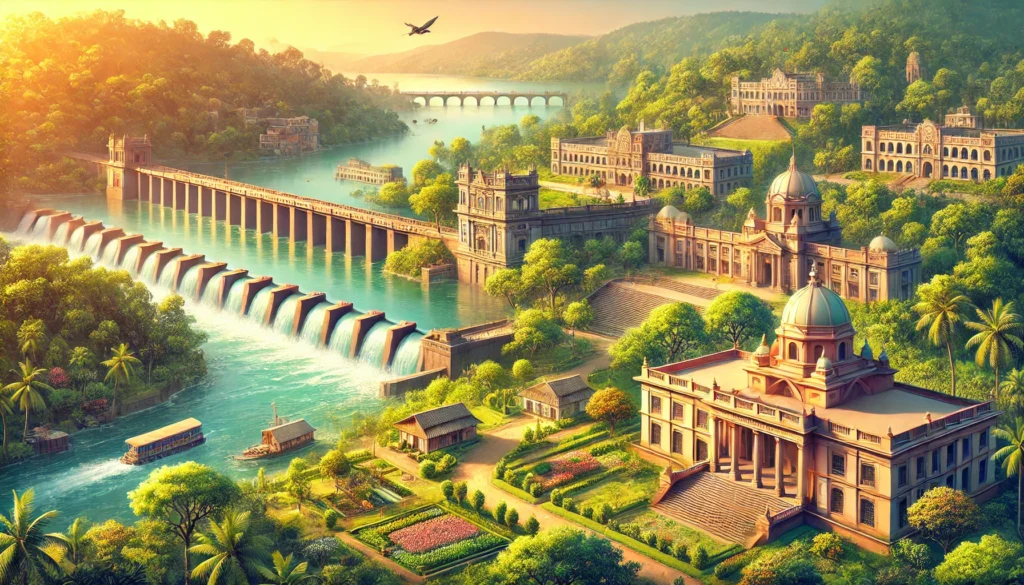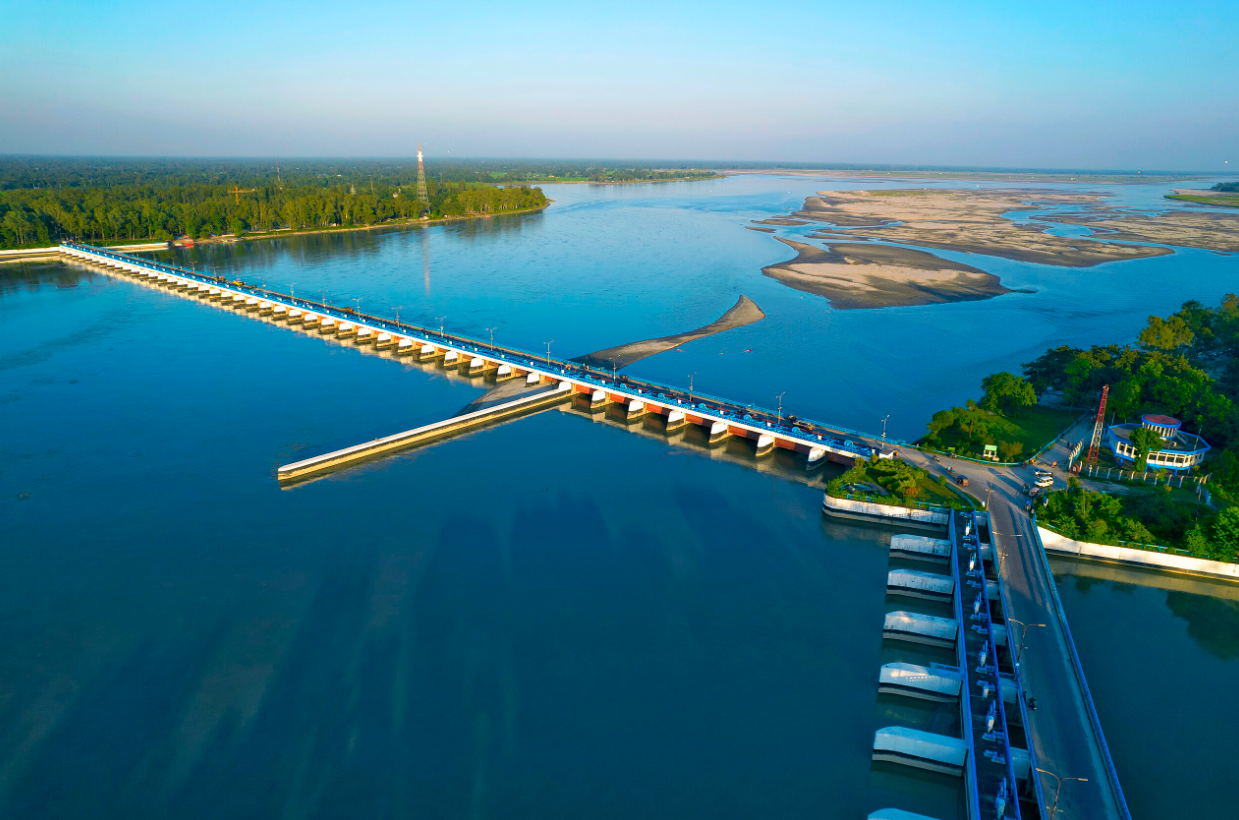Situated in the Rangpur Division of northern Bangladesh, Gaibandha is a district that stands out for its natural beauty, historical landmarks, and cultural diversity. Known for its fertile land, crisscrossing rivers, and rich history, Gaibandha provides a fascinating glimpse into rural Bangladesh’s vibrant and tranquil life.
Historical Background
Gaibandha’s history stretches back to ancient times, with archaeological evidence pointing to its significance during the Maurya and Gupta empires. The district was part of the ancient region of Pundravardhana, a significant center of trade and culture. During the Mughal and British periods, Gaibandha emerged as a hub for agriculture and river trade, particularly with the flourishing jute industry.
In 1984, Gaibandha was officially declared a district, separating from the former Rangpur district. Since then, it has developed steadily, preserving its cultural heritage while embracing modern advancements.
Geography and Natural Features
Gaibandha’s picturesque landscape is dominated by rivers, plains, and wetlands. Major rivers like the Brahmaputra, Teesta, and Ghaghat pass through the district, defining its topography and supporting its agrarian economy. Seasonal river islands, or chars, are a unique feature of the district, offering breathtaking views and a glimpse into the lives of the communities inhabiting these areas.
The district covers an area of 2,114 square kilometers, characterized by fertile alluvial soil that supports extensive agricultural activity. The rainy season transforms Gaibandha into a lush green wonderland, while the rivers add a dynamic aspect to the landscape throughout the year.
Administrative Divisions
Gaibandha is divided into seven upazilas, each with its distinctive charm and contribution to the district:
- Gaibandha Sadar:
The administrative heart of the district, Sadar is bustling with economic activity. It houses key government offices, educational institutions, and markets. - Fulchhari:
Known for its riverine beauty and chars, Fulchhari is a tranquil area with fertile lands. The river-dependent communities here have a rich cultural heritage. - Saghata:
A region dominated by agriculture, Saghata is noted for its peaceful villages and traditional lifestyles. - Palashbari:
Famous for its craft artisans and small-scale industries, Palashbari adds an industrial dimension to the district. - Sundarganj:
Sundarganj is a blend of natural beauty and vibrant traditions, making it a cultural hotspot of Gaibandha. - Gobindaganj:
The largest upazila, Gobindaganj, is a significant contributor to Gaibandha’s agricultural output and historical legacy. - Sadullapur:
Known for its serene greenery, Sadullapur offers a glimpse of rural Bangladesh at its finest.
Major Attractions

highlights-of-Gaibandha-The-composition-includes-the-iconic-Teesta-Barrage,Kacharibari
- Gokul Medh:
Part of the Mahasthangarh archaeological complex, Gokul Medh is a significant historical site featuring remnants of ancient civilizations. - Teesta Barrage:
As the largest irrigation project in Bangladesh, Teesta Barrage is not only an engineering marvel but also a picturesque destination for nature lovers. - Chars of Brahmaputra:
These river islands are a unique feature of Gaibandha, showcasing distinct flora, fauna, and the lives of communities that thrive amidst the challenges of river erosion and seasonal flooding. - Kacharibari of Zamindars:
These remnants of the colonial period reflect the grandeur and history of the district’s aristocratic past. - Shal Forests:
Located near the outskirts, the shal forests of Gaibandha are an escape into nature’s tranquility, ideal for eco-tourism. - Siddique Memorial School:
A historical educational institution in Sadar Upazila that symbolizes the region’s commitment to education and progress.
Economy and Livelihood
Gaibandha’s economy is primarily agrarian, with rice, jute, sugarcane, and vegetables being the major crops. Its fertile plains, nourished by the rivers, support thriving agricultural production. Fishing and dairy farming also play significant roles in the local economy.
The district has seen growth in small-scale industries, particularly in jute products, pottery, and handicrafts. Seasonal markets and riverine trade contribute to the district’s economy, making it a bustling yet traditional marketplace.
Cultural Heritage
Gaibandha boasts a vibrant cultural scene influenced by Bengali traditions and the lifestyle of the riverine communities. Festivals like Nabanna Utsab (Harvest Festival), Eid-ul-Fitr, Durga Puja, and Char Mela are celebrated with great enthusiasm.
The district is home to many folk artists, including bauls and pala gaan performers, who preserve the oral and musical traditions of rural Bengal.
Famous Personalities
- Samar Das: Renowned composer of Bangladesh’s Liberation War songs.
- Dr. Enamul Haque: An eminent academic and historian who hailed from Gaibandha.
Accessibility
Gaibandha is well-connected to the rest of Bangladesh via road and rail. The Dhaka-Gaibandha rail route offers a convenient and scenic journey. Local transportation includes rickshaws, auto-rickshaws, and buses.
Challenges and Opportunities
Like many districts in Bangladesh, Gaibandha faces challenges like river erosion, flooding, and poverty. However, its resilience and community-driven initiatives provide hope for a brighter future. Efforts in education, infrastructure development, and disaster management are paving the way for sustainable growth.
Conclusion
Gaibandha, with its unique blend of natural beauty, rich history, and cultural diversity, is a hidden gem waiting to be explored. Whether it’s the serene chars, historical landmarks, or vibrant festivals, this district offers an unforgettable experience for travelers and enthusiasts of rural Bangladesh.




